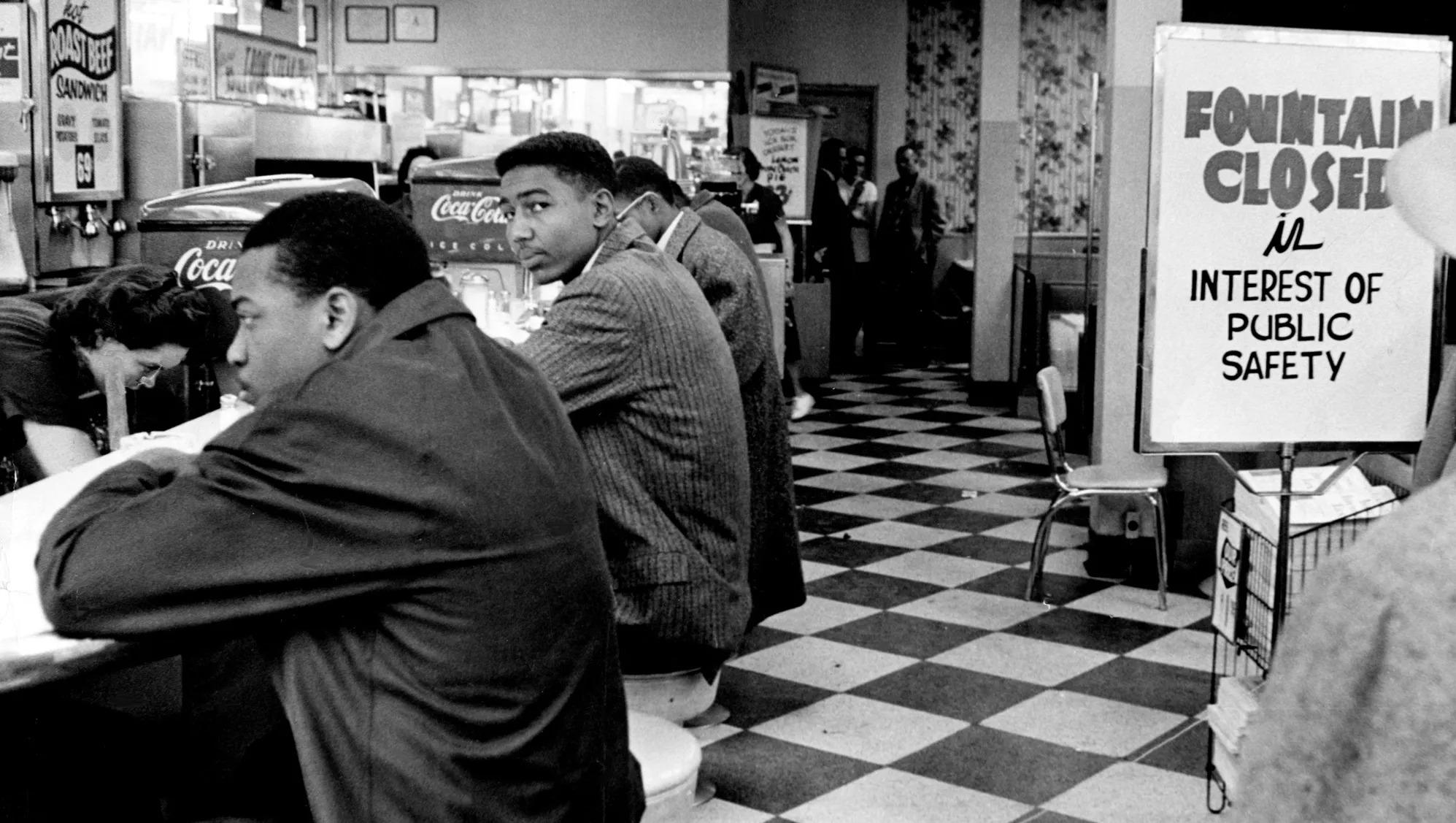The Nashville Sit-Ins were among the earliest non-violent direct action campaigns that targeted Southern racial segregation in the 1960s. The sit-ins, which lasted from February 13 to May 10, 1960, sought to desegregate downtown lunch counters in Nashville, Tennessee. The protests were coordinated by the Nashville Student Movement and the Nashville Christian Leadership Council (NCLC), primarily consisting of students from Fisk University, Baptist Theological Seminary, and Tennessee State University. Diane Nash and John Lewis, who were both students at Fisk University, emerged as the major leaders of the local movement.
On February 13, 1960, twelve days after the Greensboro, North Carolina sit-ins began, Nashville college students entered Kress (now K-Mart), Woolworth’s, and McClellan stores at 12:40 p.m. After making their purchases, the students sat down at the lunch counters. Store owners initially refused to serve the students and closed the counters, claiming it was their “moral right” to determine whom they would or would not serve. The students continued the sit-ins over the next three months, expanding their targets to include lunch counters at the Greyhound and Trailways bus terminals, Grant’s Variety Store, Walgreens Drugstore, and major Nashville department stores, Cain-Sloan and Harvey.
The first violent response to the protests came on February 27, which James Lawson, Jr., another protest leader called “big Saturday.” The protesters that day were attacked by a white group opposing desegregation. The police arrested eighty-one protesters but none of the attackers. Those arrested were found guilty of disorderly conduct. They all decided to serve time in jail rather than pay fines.
As racial tension grew in Nashville, Mayor Ben West appointed a biracial committee to investigate segregation in the city. Despite the committee’s numerous attempts at a compromise, the students declared that they would accept nothing less than the acknowledgement of their rights to sit at the store lunch counters along with white customers. On April 5, the committee suggested that the counters be divided into black and white sections. The NCLC and the Nashville Student Movement rejected the proposal, arguing that segregation of the counters was no better than black exclusion from them.
On April 19, a bomb destroyed the home of Z. Alexander Looby, the defense attorney representing many of the protesters. The bombing of Lobby’s home triggered a mass march to city hall where 2,500 protesters demanded answers from Mayor West. Diane Nash pointedly asked Mayor West if it was wrong for a citizen of Nashville to discriminate against his fellow citizens because of his race or skin color. The mayor admitted that it was wrong, giving the students an important symbolic victory in their campaign. Nash then asked the mayor if the lunch counters in Nashville should be desegregated. They mayor said they should.
After weeks of secret negotiations between merchants and protest leaders, an agreement was finally reached during the first week of May. On May 10, six downtown stores opened their lunch counters to black customers for the first time; the customers arrived in groups of two or three during the afternoon and were served without incident. With that agreement, Nashville became the first major southern city to begin desegregating public facilities. The Nashville campaign became a model for other civil rights protests in the 1960s and 1970s.
Megathreads and spaces to hang out:
- 📀 Come listen to music and Watch movies with your fellow Hexbears nerd, in Cy.tube
- 💖 Come talk in the New Weekly Queer thread
- 🔥 Read and talk about a current topics in the News Megathread
- ⚔ Come talk in the New Weekly PoC thread
- ✨ Talk with fellow Trans comrades in the New Weekly Trans thread
reminders:
- 💚 You nerds can join specific comms to see posts about all sorts of topics
- 💙 Hexbear’s algorithm prioritizes comments over upbears
- 💜 Sorting by new you nerd
- 🌈 If you ever want to make your own megathread, you can reserve a spot here nerd
- 🐶 Join the unofficial Hexbear-adjacent Mastodon instance toots.matapacos.dog
Links To Resources (Aid and Theory):
Aid:
Theory:

How to argue on Wikipedia:
Step 1: Open up a new tab
Step 2: Type in Google dot Scholar dot Com
Step 3: Type your opinion in the search
Step 4: Copy/paste the first 4 links into the talk page discussion without reading those articles or anything the non-chuds are saying in the discussion.
Step 5: Whine about consensus even though you're in the minority